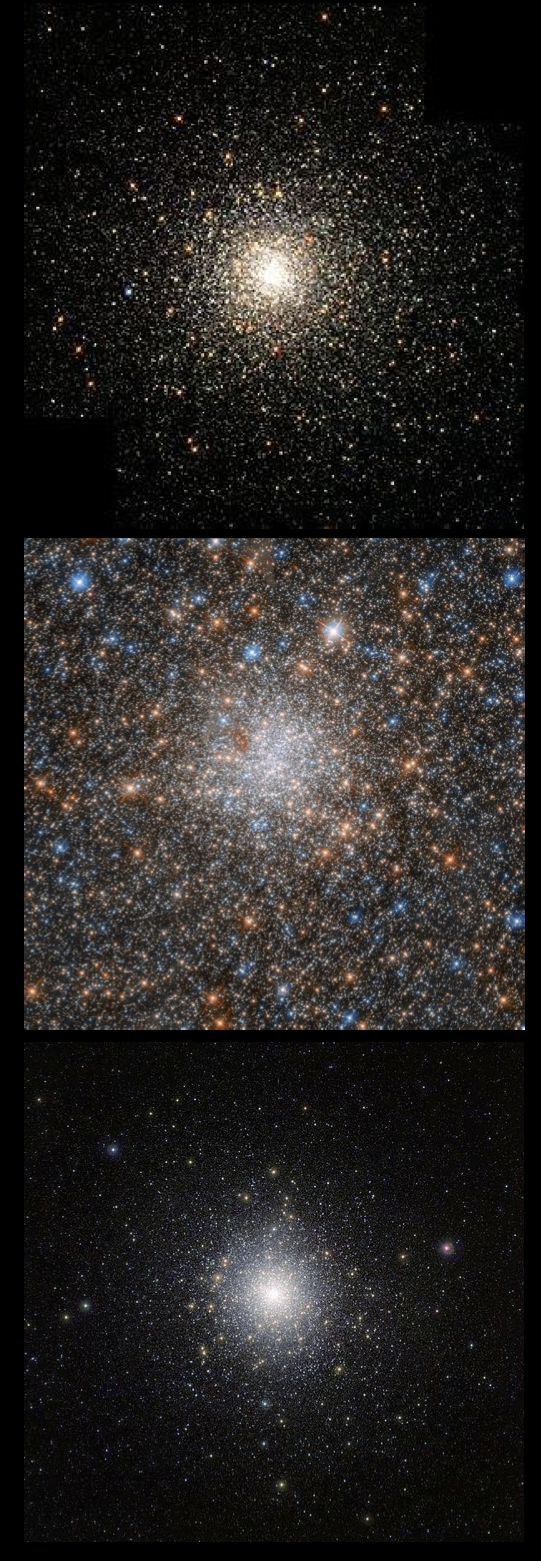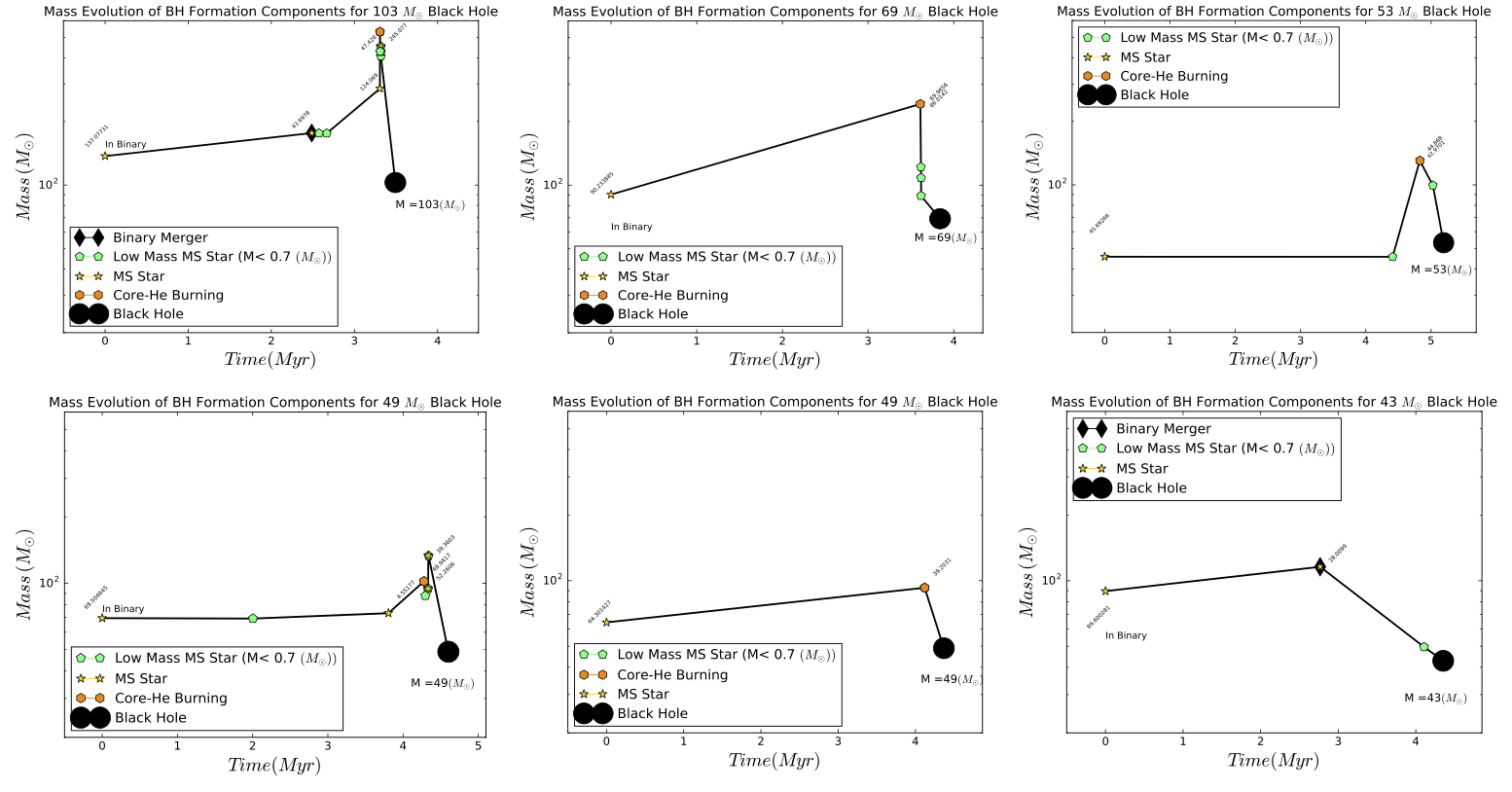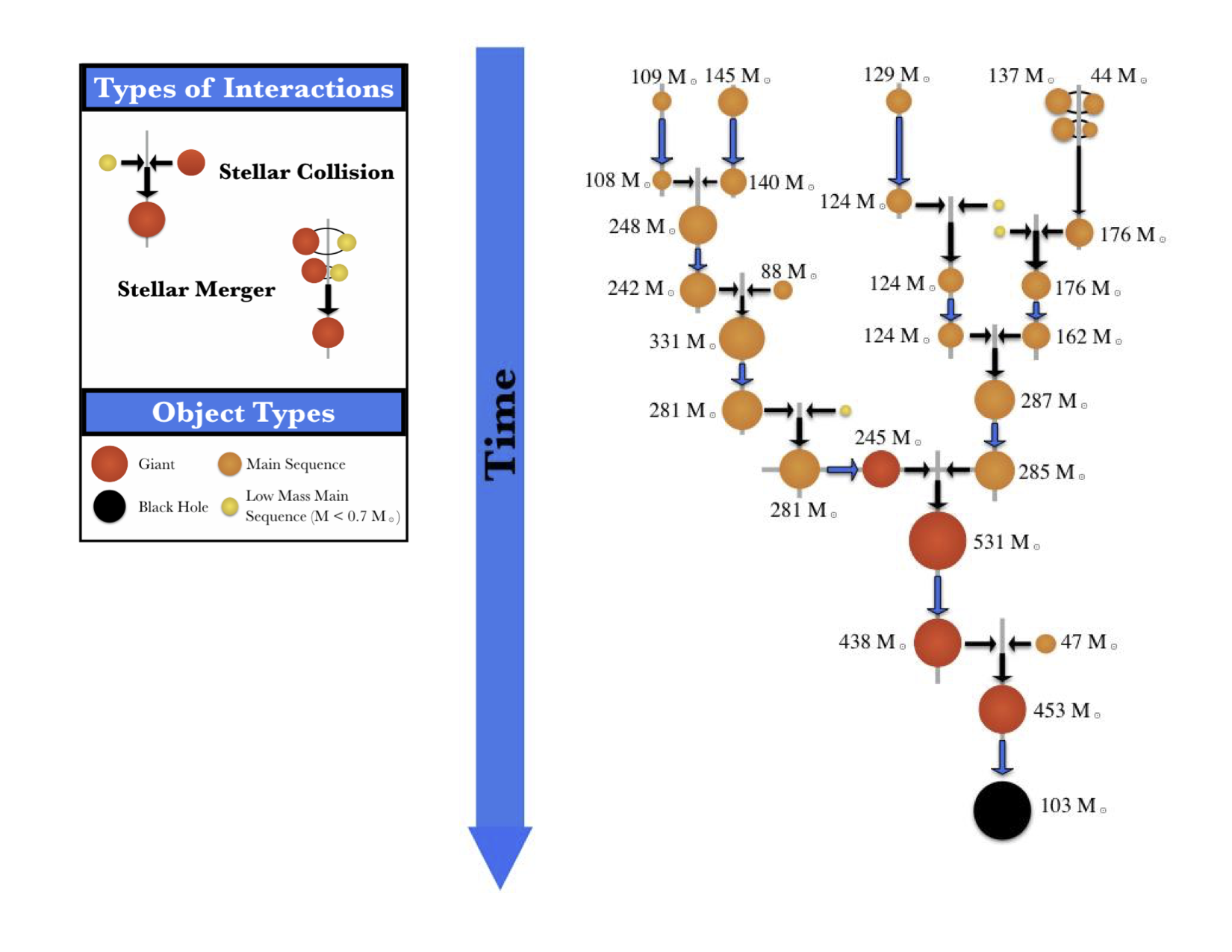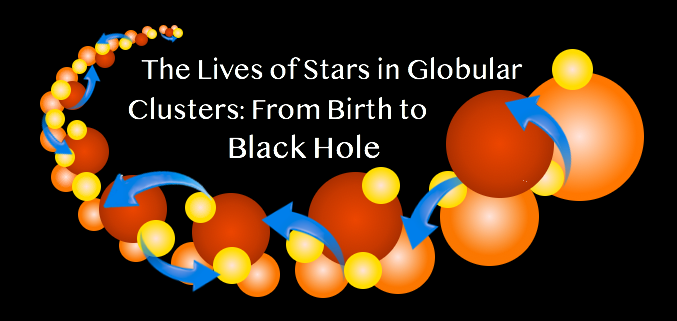Forming Heavy Black Holes in Globular Clusters
While the formation of black holes is already an exceedingly complex discussion in the astrophysics community, the story becomes even more complicated when we consider heavy (≥ 40 M☉) stellar black holes. From single stellar evolution, we cannot form black holes larger than ~ 40 - 60 M☉. This motivates us to examine formation pathways for heavy black holes in globular clusters. When in a cluster environment, large black holes are typically thought to form through runaway collisions of massive stars before black hole formation. In this study, we build a detailed collisional history of black hole progenitor stars in globular clusters through the use of a Monte Carlo n-body simulation code. We find that collisions of massive stars can indeed lead to the formation of heavy black holes at or above the single stellar evolution limit, including intermediate-mass black holes, in dense star clusters.
What Are Globular Clusters?
Globular clusters are dense, spherical collections of stars and are thought to be among the first recognizable structures in galaxies like the Milky Way. Typically, globular clusters are comprised of 100,000 to 1 million stars bound together by gravity. Figure 1 (right) features a variety of globular clusters both in and out of the Milky Way. The Milky Way contains 150 known globular clusters, though there may be more. Due to the compact nature of globular clusters, stellar interactions in these environments are exceedingly common. Further, with the advent of gravitational wave detection (and hence more elaborate compact remnant detection), the study of black hole formation and evolution in globular clusters has been brought to the forefront.
Black Holes in Globular Clusters
A black hole is a region of space that is extremely dense, with gravity so strong that no form of matter or radiation can escape it. In this study, we focus on stellar black holes, which form when large stars collapse at the end of their lives. Only the heaviest stars (≥ 20 M☉) can turn into stellar black holes. This pathway of stellar evolution is shown in Figure 2 below. Here we see a star that expands into giant, and then explodes as a supernova before collapsing into a black hole. While this is the case for many stellar black holes, some progenitor stars are so large that they skip the supernova phase entirely and form a black hole through direct collapse.
There is an upper limit on the size of black holes that can be formed through the collapse of a single star (~ 40 - 60 M☉ ), but this value is uncertain. In our simulation code, we assume the heaviest black hole that can form through stellar evolution is 40.5 M☉ (Rodriguez et al. 2018). However, other work has suggested this maximum mass may be as high as 60 M☉ (Spera and Mapelli 2017). When stars undergo collisions and mergers, they can form black holes above this upper bound. In fact, this is a possible formation pathway for intermediate-mass black holes (IMBHs).
In short, IMBHs are black holes that are larger than stellar black holes, but smaller than supermassive black holes (Miller & Colbert 2004). While there are three leading theories for how these heavy black holes may form, in a cluster environment their formation is typically attributed to runaway collisions between massive progenitor stars.


|
Analyzing Cluster Dynamics with Monte Carlo N-body Simulations Modeling dense star clusters such as globular clusters is one of the most challenging problems in computational astrophysics. We have developed a highly parallelized and advanced Monte Carlo approach to stellar dynamics that allows us to model clusters with up to N~106 particles in at most ~1 week. Our Cluster Monte Carlo code (CMC) contains all the relevant dynamics for modeling dense star clusters, including two-body scatterings, 3- and 4- body strong encounters, and three-body binary formation. CMC also provides detailed prescriptions for single and binary stellar evolution. Single stars are evolved on the basis of metallicity and stellar winds, while binaries are evolved with regards to the most recent population synthesis studies of isolated binary evolution in galactic fields. Formation Pathways for Large Black Holes We model the evolution of a globular cluster with a viral radius (distance from cluster center at which the cluster obeys the virial theorem) of 0.5 pc and a metallicity (measure of metallic elements in the cluster) of 0.0002 over a period of 12 Gyr. We examine the largest black holes formed through stellar evolution in the cluster, and plot their collisional history dating back to the formation of the cluster itself. We found a multitude of black holes above or near the accepted single stellar evolution upper limit for stellar black holes. Plots of the evolutionary history of the stars that produce these heavy black holes are presented in Figure 3 (below). It is worth noting that one of these black holes is actually an IMBH (Figure 3, top left panel), and we give a more detailed breakdown of the collisional history of this black hole in Figure 4 (below). 

This black hole forms as the product of several massive stars, and its collisional history spans a period from t = 0 to t = 3.5 million years, with t = 0 corresponding to the formation time of the cluster (in our simulation, cluster formation is complete when all the component stars have formed, and the residual gas from early cluster formation has dissipated). These stars undergo both collisions and a binary merger in order to assemble a giant of 453 M☉. At this point, stellar evolution takes over as the star collapses to a 103 M☉ IMBH. However, the size of this final black hole is dependent on the specific treatment of black hole formation in the simulation code. Other treatments could see a black hole slightly smaller, or more interestingly, up to four times larger than our 103 M☉ IMBH. Nonetheless, this collisional paradigm results in the formation of an IMBH. Discussion We find that stellar collisions and mergers can play a key role in the formation of heavy black holes in clusters, including IMBHs. Hence, in these dense stellar environments, collisions are frequent enough to have a significant impact on the formation of compact objects. We observe the synthesis of stars well over single stellar formation upper limits through runaway collisions. These massive stars can then collapse to form remnants on the scale of heavy IMBHs. Such black holes in star clusters can go on to acquire a companion black hole, possibly becoming loud and detectable sources of gravitational waves. With further analysis, we hope to examine the effects of thermodynamic timescales, collision rejuvenation prescriptions, and spin on the formation of heavy black holes in globular clusters to glean a more detailed understanding of some of the most mysterious objects in the universe.
|
|

